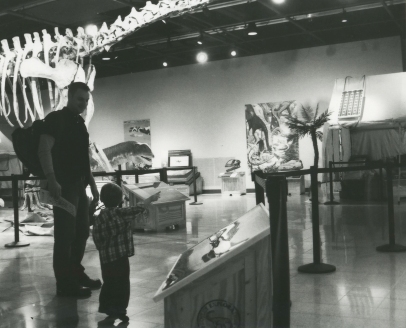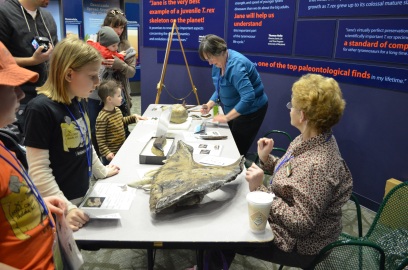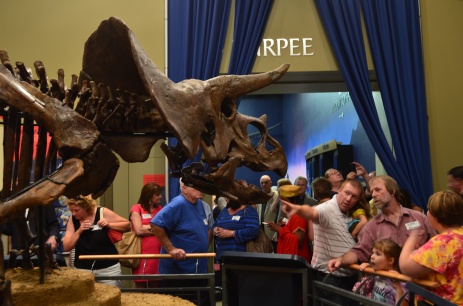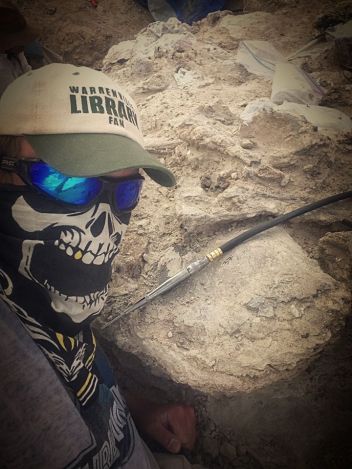
There are lots of people and things that can affect your life but very few will ever change is. The Paleontology Program at the Burpee Museum of Natural History has changed my life, in the most amazing ways possible.
I remember being thirteen in 2005 and being so excited to visit the museum to see Jane, their juvenile Tyrannosaurus rex. I’ve been a dinosaur/paleo enthusiast since I was two years old and was really amped to see this important specimen. When we walked up to the main desk I saw a brochure for volunteering on summer expedition with the Burpee to the Hell Creek. I snatched one up, and knew right then that I had to go on this dig.
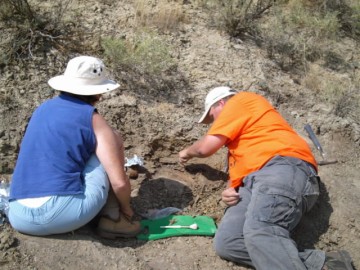
- Myself (in the orange) on my first dig in 2007
The next two summers I saved up money from various jobs and in 2007 at fifteen years old I went on my first dig with the Burpee, and it was the best choice I ever made. I was so excited when I reached Camp Needmore, ready to tackle the coming week and looking forward to this new experience. After years of reading books and watching documentaries I’d finally be in the action.
It is now nine years later, and I have just returned from Utah where I was on my sixth expedition with the Burpee. Over the years I have worked my way up from volunteer, to intern, and now these past four weeks I was actually an officially employed field assistant. I remember during my first few digs how I’d watch Scott Williams, Josh Matthews, Katie Tremaine, and the other leaders teaching the volunteers, telling personal stories, and generally being a unit. I am now a part of that unit. I’m helping with the teaching and prep during the digs. Their stories are now my stories. I am a part of their family.
Beyond my growth within the Burpee itself, without the Paleo Program I would not be where I am today. It’s because of the Burpee that I ended up going to Augustana College (IL)- where I met many of my closest friends, and had other important life experiences. It’s because of the program and people involved that I’ve had the jobs I’ve had, and my life is on its current trajectory. I wouldn’t be here if it wasn’t for people like Scott, Katie, and Josh.
Also, because of the Burpee Paleo Program and related events (like PaleoFest) that I’ve made incredible connections. I’ve met and talked with some of the top scientists like Jack Horner, John Foster, Phil Currie, Kristina Curry Rogers, and many more; I’ve had dinner, joked, and shared drinks with Mark Goodwin, Brian Switek, Eugenia Gold, and Mike D’Emic; I’ve sat and dug literally next to Jim Kirkland, and Thomas Holtz! Many of these people are paleo giants that I idolized growing up. I never thought I’d ever meet them let alone dig alongside them. Yet here I am, doing exactly that all because of Burpee’s Paleo
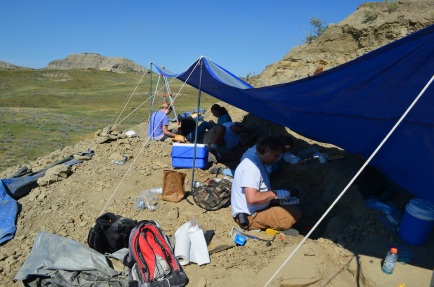
Thomas Holtz at the Burpee Ninja Turtle site in Montana. I’m behind the camera, trying not to scream.
Program.
I have learned so much about the science, personal work ethic, and (as corny as it sounds) myself because of this program. It has been invaluable to me as an individual.
It’s incredible to see how the Burpee has helped advance the science. Some of the most important papers and research in the last decade have ties to Burpee either by using their specimens, presenting it at PaleoFest, or from help/collaboration with the staff.
Since my first time going to the Burpee in 2005 I have been able to see the museum grow into a completely different entity mainly because of the Paleo Program. I’ve seen great new additions, including Homer’s Odyssey and many great traveling exhibits like African Giants, Megalodon, and Savage Ancient Seas. I’ve witnessed some of the best paleo symposiums ever including this past year’s Women in Paleontology PaleoFest. I’ve seen the Paleo Program strive to have new forms of outreach and education like attending Comic Cons, giving guided tours at dig sites, and hosting different family oriented events. I’ve been able to see new people grace the museum’s halls and I’ve seen kids come back each year to events or digs and grow as individuals, exactly like me.
My life has forever been changed and I can’t imagine it without the Paleo Program or the individuals involved like Scott, Katie, and Josh. I owe a lot to them, their hard work, and their dedication. They are great mentors, scientists, and friends.
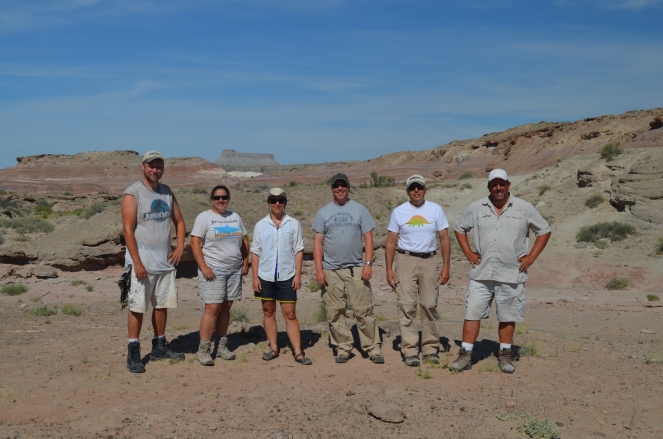
From right to left: Scott Williams, Steven Landi, Josh Mathews, Eugenia Gold, Katie Tremaine, and myself.

 nd, for example, you see that Linheraptor lived between 84 and 75 million years ago you can flip to this key and pin point the period that it would belong to.
nd, for example, you see that Linheraptor lived between 84 and 75 million years ago you can flip to this key and pin point the period that it would belong to. bosses and then continues on with the book. I love the fact that it’s included in this text.
bosses and then continues on with the book. I love the fact that it’s included in this text.

